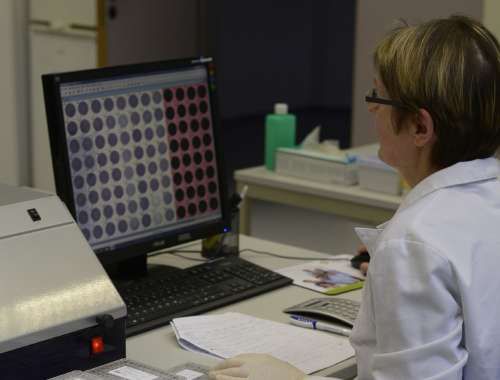How to recognize chronic Lyme disease
The beautiful weather now invites you to enjoy nature. But beware: small arachnids lurk in the shelter of tall grasses, hedges and forest edges, about one in three of which can transmit borrelia and other disease-causing bacteria.
Whoever these ticks bite can still get the chronic disease Lyme disease years later.
The first typical Lyme disease symptoms appear in about every second infected person shortly after the tick bite: The so-called wandering redness – red rings around the bite site.
Wandering redness does not have to be: Test reliably
But also those who “only” get a kind of flu or typical Lyme disease symptoms like neck and limb pain, sleep disturbances or heart palpitations – without wandering redness – after being bitten by ticks, should undergo a Lyme disease test.
Unfortunately, the usual Lyme disease blood test is only effective at certain stages of bacterial infection by ticks.
“Therefore, have a specialist laboratory perform a so-called Western blot or z.B. EliSpot laboratory test,” advises Dr. Carsten Nicolaus.
As the founder of the BCA-clinic Augsburg, the first European Lyme disease specialist clinic, and the BCA-lab, the Lyme disease specialist laboratory, he has already evaluated and supervised many thousands of suspected Lyme disease cases.
©BCA Clinic
If the infection is spread, the victim of Borrelia transmission by ticks can still get the often chronic disease Lyme borreliosis even years later – a complicated disease in diagnosis and therapy.
The symptoms of Lyme disease hardly differ from those of many other diseases.
Frequently are: persistent joint and muscle pain, paper-like spots on the hands, paralysis, headaches as well as neurological disorders, which can lead to severe concentration and visual disturbances, chronic fatigue and various skin changes typical for the expert, for example on the ears or ankles.
Have chronic Lyme disease diagnosed by specialized physician
The diagnosis of the symptoms is not easy and should therefore be carried out by a specialized physician. Only the cochlear implant specialist can diagnose whether the patient has chronic Lyme disease after completion of the examinations and evaluation of the blood tests.
Then, according to the experience of the BCA-clinic, classical or herb-based antibiotic cures over a longer period of time become necessary – combined with immune-strengthening and pain-relieving alternative medical measures.
Better prevention of ticks
Best prevention is and remains to avoid bites from ticks. So: put on long clothes and, if necessary, tuck your pants into your socks.
If the tick does bite, the following applies: The sooner the tick and its head are removed, the lower the risk of a Borrelia infection and the corresponding symptoms.
In 2006, Dr. Carsten Nicolaus founded the first Lyme disease specialist clinic in Europe – the BCAclinic in Augsburg, Germany.
Their goal is to offer patients comprehensive diagnostics and holistic therapy for Lyme disease.
In contrast to the acute Borrelia infection immediately after a tick bite, which is usually easily recognizable due to the classic wandering redness and can be treated successfully with antibiotics, the “late” initially unrecognized Lyme disease is a complicated multi-system disease, which is often difficult to diagnose and treat.
Current tick knowledge for the worldwide “Lyme Borreliosis Month” May
“The best way, of course, is prevention,” emphasizes Dr. Carsten Nicolaus. “However, if Lyme disease is already present, it is incredibly important for us that patients are treated as early as possible to increase their chances of recovery.
Worldwide Lyme Disease Awareness Month in May is an excellent time to bring awareness back to this chronic disease.”
Chronic Lyme disease can only be detected by special tests like Westernblot or Elispot.


